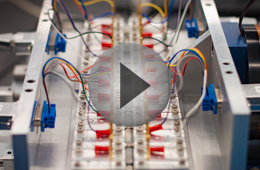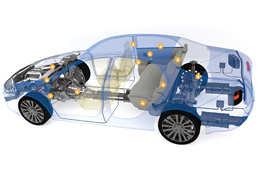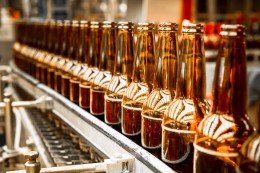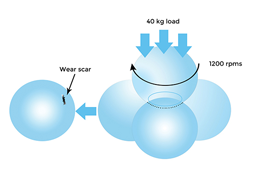Nye Lubeletter - October 2016
 Advanced Lubricant Testing 101 - Fretting Wear in Electrical Connectors
Advanced Lubricant Testing 101 - Fretting Wear in Electrical Connectors
 The featured test demonstrated in this video is a fretting wear procedure. This test equipment and test method is unique to Nye. It was designed and built by our Application Design and Validation Testing (ADVT) lab. Fretting wear refers to a mechanical and chemical wear mechanism where the sliding contact between two surfaces creates wear, which becomes oxidized. Fretting wear is one of the major forms of deterioration and failure in a variety of industries including Automotive, Aerospace, and Consumer Electronics. Research has shown that over 60% of electrical problems in cars are directly related to fretting wear.
The featured test demonstrated in this video is a fretting wear procedure. This test equipment and test method is unique to Nye. It was designed and built by our Application Design and Validation Testing (ADVT) lab. Fretting wear refers to a mechanical and chemical wear mechanism where the sliding contact between two surfaces creates wear, which becomes oxidized. Fretting wear is one of the major forms of deterioration and failure in a variety of industries including Automotive, Aerospace, and Consumer Electronics. Research has shown that over 60% of electrical problems in cars are directly related to fretting wear.
![]()

Next Generation of Lithium Soap Greases

Nye Lubricants is developing the next generation of synthetic hydrocarbon greases thickened with lithium soap. These new greases are the Rheolube 460 series, an improved version of Nye’s 360 series. The first grease in the series has been formulated and commercialized as Rheolube® 462. The new grease improves on our current Rheolube® 362HT product successfully used for many years in the automotive industry. Rheolube® 462 has been designed for low-temperature applications exceeding the OEM requirement of -40°C. The grease has a long service life due to its resistance to ageing and oxidation, and demonstrates improved load carrying ability and anti-wear performance.
![]()

Why Do O-Ring Seals Need Lubrication?
 Lubricating an O-ring is an important part of the assembly line process as it can help protect an application from abrasion or scuffing damage. Applications that are constantly in motion are prone to this wear over time. The addition of a lubricant can extend the operating life of the O-ring by creating a barrier film over its surface. This barrier film can also help reduce leakage by filling the asperities between the metal surface and the O-ring seal. These benefits can be seen in Nye’s Case Study, featuring KOSME, a company that designs and manufactures a full range of bottling and beverage line equipment for filling, labelling, and stretch blow molding.
Lubricating an O-ring is an important part of the assembly line process as it can help protect an application from abrasion or scuffing damage. Applications that are constantly in motion are prone to this wear over time. The addition of a lubricant can extend the operating life of the O-ring by creating a barrier film over its surface. This barrier film can also help reduce leakage by filling the asperities between the metal surface and the O-ring seal. These benefits can be seen in Nye’s Case Study, featuring KOSME, a company that designs and manufactures a full range of bottling and beverage line equipment for filling, labelling, and stretch blow molding.

Tribological Testing by 4-Ball Methods
 In the last issue, we described how tribological properties of a lubricant can be measured using the SRV. This issue covers other methods for determining the tribological characteristics of a lubricating grease, using two ASTM test methods, the 4-Ball EP Tester and 4 Ball Wear. The 4 Ball EP Tester focuses on Extreme pressure (EP) properties and the 4 Ball Wear focuses on wear scar (WS), and coefficient of friction (COF).
In the last issue, we described how tribological properties of a lubricant can be measured using the SRV. This issue covers other methods for determining the tribological characteristics of a lubricating grease, using two ASTM test methods, the 4-Ball EP Tester and 4 Ball Wear. The 4 Ball EP Tester focuses on Extreme pressure (EP) properties and the 4 Ball Wear focuses on wear scar (WS), and coefficient of friction (COF).
![]()

